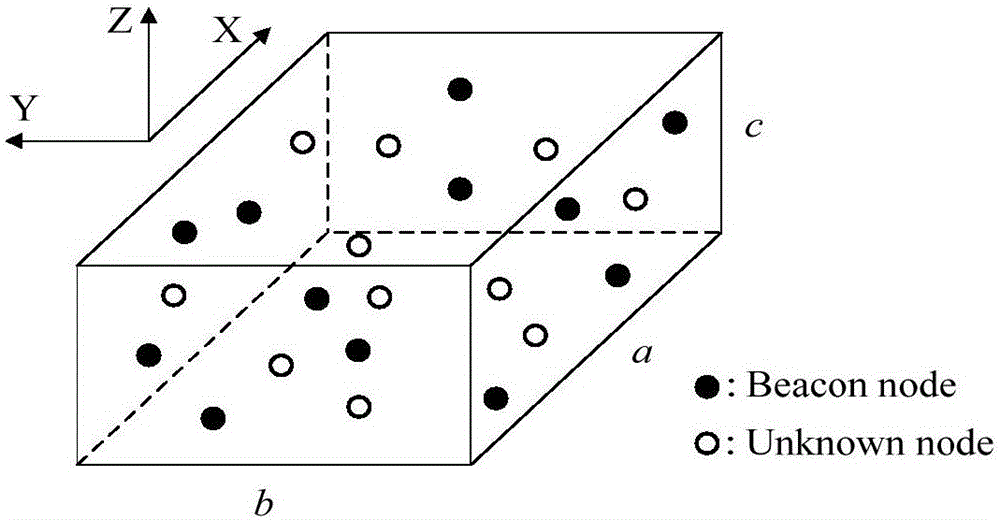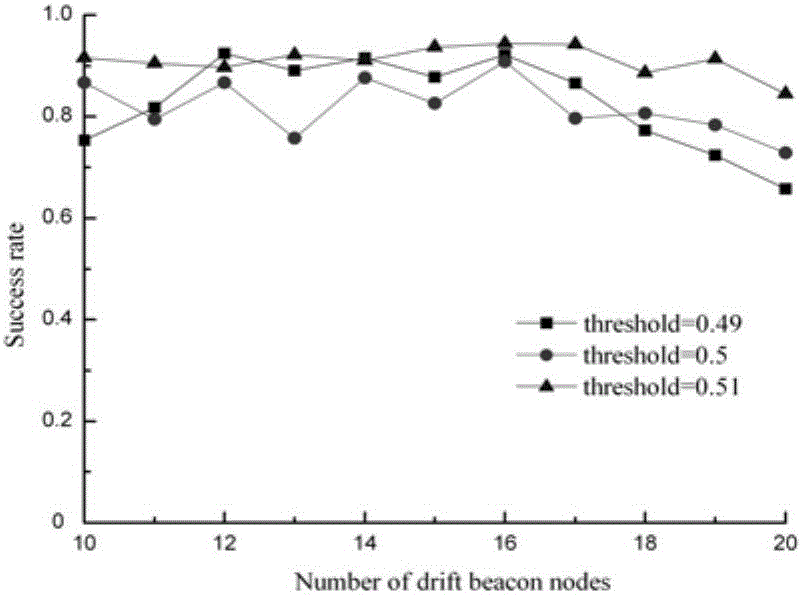Distributed type node drift detection method and device
A distributed node, drift detection technology, applied in measurement devices, radio wave measurement systems, instruments, etc., can solve the problem of large computational load in the node drift detection process
- Summary
- Abstract
- Description
- Claims
- Application Information
AI Technical Summary
Problems solved by technology
Method used
Image
Examples
Embodiment Construction
[0044] The specific embodiments of the present invention will be further described below in conjunction with the accompanying drawings.
[0045] Embodiment of a distributed node drift detection method of the present invention
[0046] A wireless signal is an electromagnetic wave signal. Considering the received signal strength indicator of an isotropic spherical wave, the unit is dBm. During the propagation process, part of the energy will be absorbed by the propagation medium, and the strength will decay exponentially with the distance. Commonly used wireless signal propagation path loss models include: free space propagation model, two-wire ground reflection model, and logarithmic distance path loss model, among which the logarithmic distance path loss model is most widely used. The logarithmic distance path loss model consists of two parts. The first one is the pass loss model, which can predict the received signal power when the distance is d, expressed as Use a distance...
PUM
 Login to View More
Login to View More Abstract
Description
Claims
Application Information
 Login to View More
Login to View More - R&D
- Intellectual Property
- Life Sciences
- Materials
- Tech Scout
- Unparalleled Data Quality
- Higher Quality Content
- 60% Fewer Hallucinations
Browse by: Latest US Patents, China's latest patents, Technical Efficacy Thesaurus, Application Domain, Technology Topic, Popular Technical Reports.
© 2025 PatSnap. All rights reserved.Legal|Privacy policy|Modern Slavery Act Transparency Statement|Sitemap|About US| Contact US: help@patsnap.com



